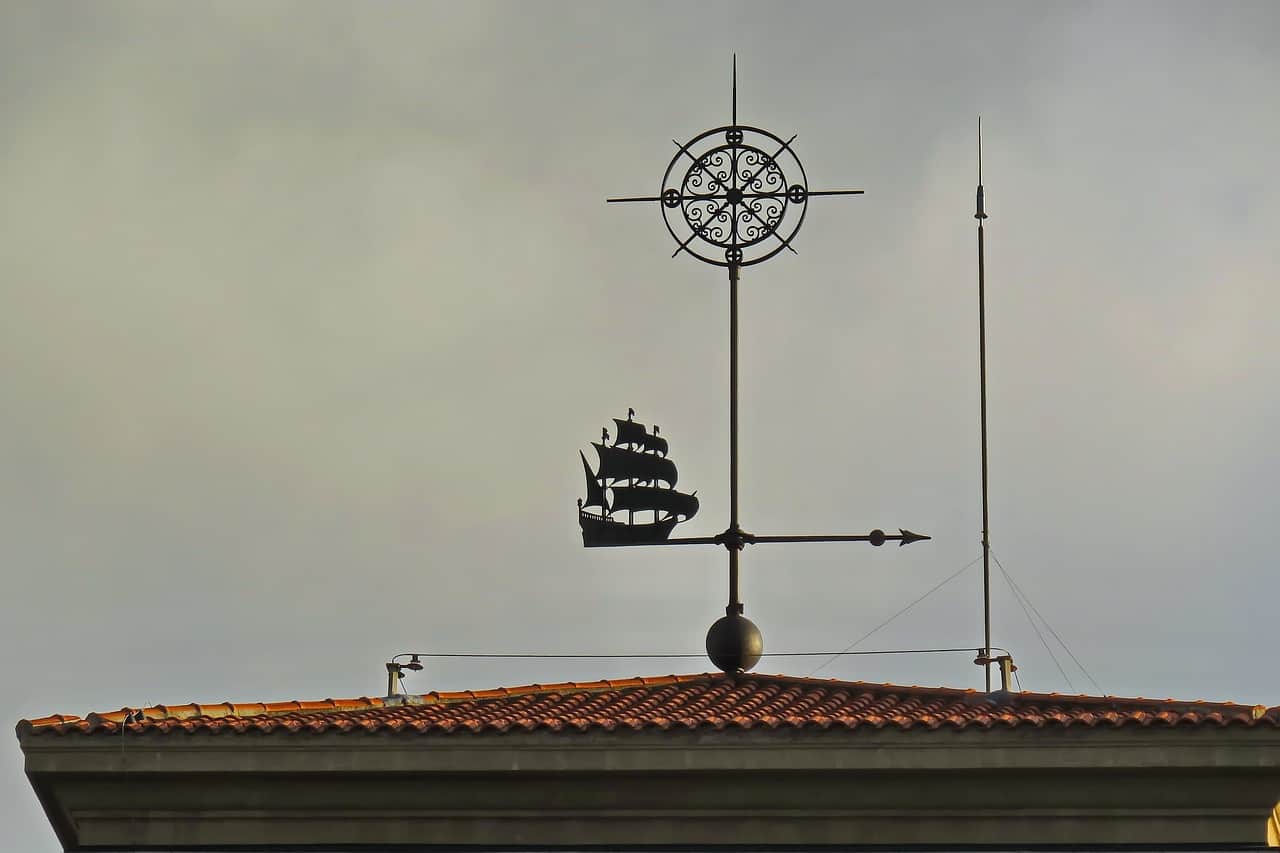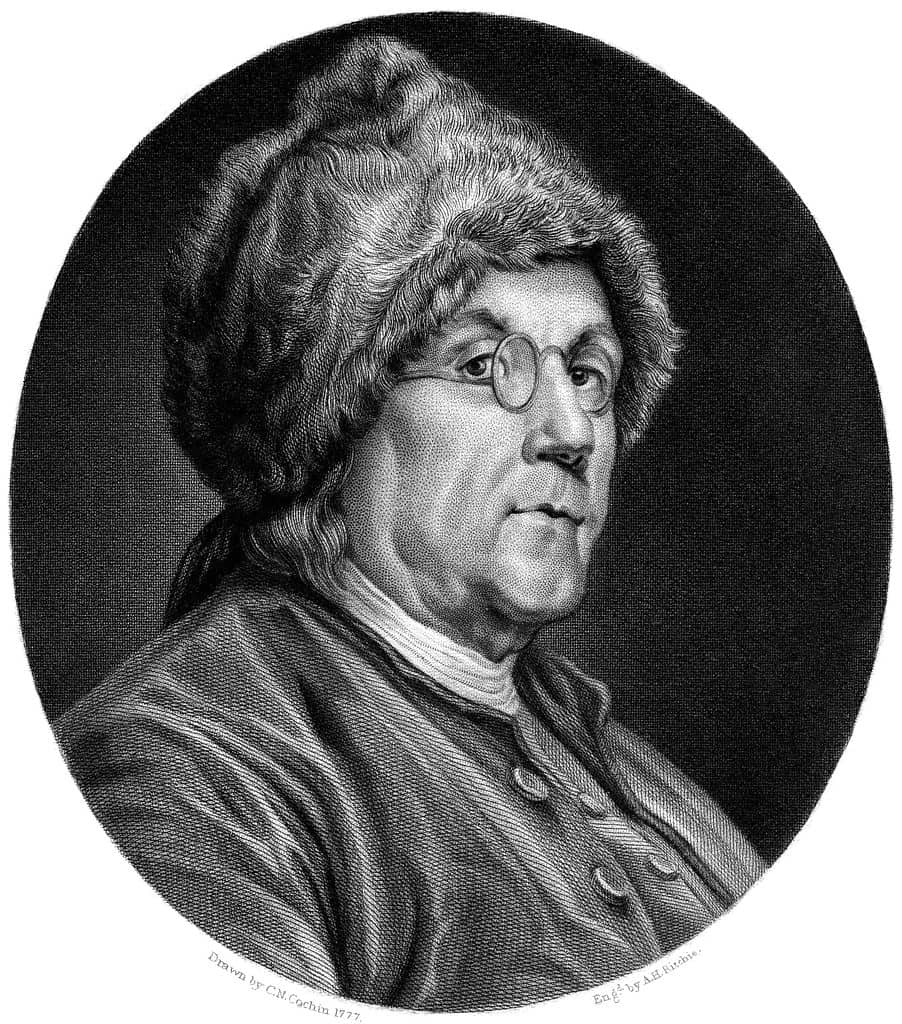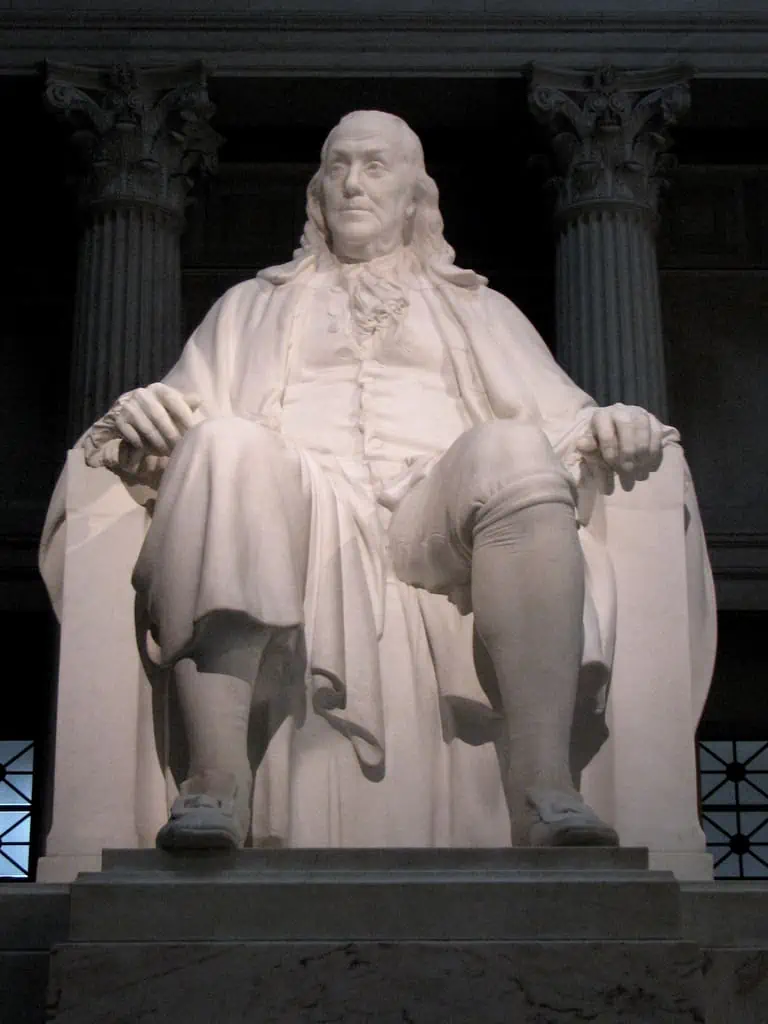
Benjamin Franklin is one of the best-known figures, not just in the United States but all over the world. A list of Benjamin Franklin facts will show you just how talented he was. He dabbled in various fields in which he excelled such as music, writing, invention, politics, and democracy. His inventions such as the Franklin stove, urinary catheter, and bifocals were also ahead of his time. Often mistaken as one of the former presidents of the United States, Franklin served as an ambassador to France.
He spent years in France, gathering support for the American Revolution. In 1778, his efforts paid off. France joined the US against England. Many say America would not have won if France did not offer help.
The most surprising aspect of it all is that Benjamin Franklin was primarily self-taught, having attended only the Boston Latin School for two years and then George Brownell’s English School for another two.
Nonetheless, he received honorary degrees from Harvard, Yale, the College of William and Mary, the University of St. Andrews, and the University of Oxford. He would also play a key role in the establishment of what is now known as the University of Pennsylvania.
Benjamin Franklin’s amazing biography is proof that you can achieve anything that you set your mind to. There are no limits in life, except for those who you impose upon yourself.
To keep you inspired, here are the 50 facts you need to know about Benjamin Franklin!
- He was born on January 17, 1706.
- Benjamin Franklin was the eighth child of his mother, Abiah, and the 15th child of his father, Josiah.
- He stopped studying at the age of ten.
- He worked for his brother at 12 years of age.
- Benjamin had three children named William Franklin, Francis Folger Franklin, and Sarah Franklin.
- Benjamin Franklin was born in Boston, Massachusetts.
- He was an inventor, scientist, and political philosopher.
- Josiah Franklin, his father, was a businessman, tallow chandler, soap boiler.
- Benjamin’s wife is Deborah Franklin.
- Benjamin Franklin’s son, William Franklin, was an illegitimate child.
- Benjamin attended Boston Latin School but did not graduate.
- Benjamin Franklin was an author.
- He published Poor Richard’s Almanack, a yearly almanac of Benjamin.
- Benjamin Franklin was a chess player.
- He played musical instruments like harp and violin.
- At 17, Benjamin ran away to Philadelphia, Pennsylvania.
- When he was a teenager, Benjamin became a vegetarian.
- Benjamin Franklin had 16 siblings.
- Benjamin had used several pen names like Silence Dogood and Polly Baker.
- He opened a printing business in Philadelphia.
Benjamin Franklin invented the "Franklin Stove."
Originally, fireplaces in homes are smoky and inefficient. In 1742, Benjamin Franklin invented the Franklin stove, a wood-burning stove that resembles a fireplace. It has an enclosed side, back, bottom, and top, but the front part is completely open. The stove produced more heat, but less smoke and used less wood.
Franklin developed the lightning rod.

In 1752, as part of Benjamin Franklin’s exploration with electricity, he developed an object to guard houses against lightning. He called his invention a lightning rod. This device has a wire attached to the top or roof of a building and is connected to the ground.
Benjamin developed the armonica.

Franklin’s armonica or glass armonica consists of 37 glass bowls of different sizes and thickness. A hole was made through the middle of the glass bowls, and an iron rod ran through the holes from smallest to largest. It is turned by a foot pedal. When the edges of the bowl are touched with wet fingers, the instrument could create different notes. The edges of the bowl have different colors that signify its tone.
Benjamin Franklin was the inventor of bifocals.
Benjamin wore glasses for most of his lifetime, but as he got older, he began to need eyeglasses to see close objects. He grew tired of switching two pairs of glasses, so he thought of an idea of how to solve the problem, and invented bifocals. These are the glasses for people who have difficulty in seeing both near and far objects. The top lens is for seeing, while the lower half is for reading.
Franklin created a catheter for his brother.
In 1752, Benjamin invented the first urinary catheter. His brother, John, suffered from kidney problems, and had to undergo excruciating pain every time the metal tube catheter was inserted into his bladder. To lessen his brother’s pain, he thought of making a flexible urinary catheter tube.
Benjamin became a famous writer at a young age.
After his brother James founded The New-England Courant, one of the first American newspapers, Benjamin secretly submitted essays and articles under the name “Mrs. Silence Dogood,” who was described as an old widow. This happened after he was rejected several times when he tried to issue his work under his real name. In 1722, “Mrs. Silence Dogood” articles were published and became popular widely.
Franklin became a fugitive.
James Franklin was unhappy when found out that the real “Mrs. Silence Dogood” was his brother, Benjamin. Due to this, James harassed and beat Benjamin. In 1723, tired of his brother’s beatings, Benjamin ran away.
During that time, running away from someone’s custody is illegal. Regardless, Benjamin went to New York, hoping to find a job, but was not able to. He wandered across New Jersey and finally reached Philadelphia.
Benjamin became the publisher of the Pennsylvania Gazette.
In 1728, Benjamin put up a printing business in Philadelphia in partnership with the farmer and printer, Hugh Meredith. A year after, he became the publisher of The Pennsylvania Gazette, one of the most famous newspapers in the US. Franklin did not only print the newspapers but also submitted articles under several pen names.
Franklin founded the University of Pennsylvania.
The University of Pennsylvania is a private institution located in Philadelphia, Pennsylvania. It is one of the Ivy League schools, and one of the oldest schools in the United States. In 1740, Franklin founded it as a charity school or an elementary school for poor children.
Benjamin published a "Join or Die" cartoon.
One of the earliest practitioners to use an image to persuade people was Benjamin Franklin. In 1754, he published a “Join, or Die” cartoon featuring a snake cut into pieces with the words “Join, or Die”. It said to symbolize the division of American Colonies. Using the image, he aimed to unite the colonies to beat the French and their Native American allies.
Benjamin had his first trip to England in the 1720s.
His first trip to England was in 1724 when he was 18 years old. The Royal Governor of Pennsylvania, Sir William Keith, asked him to go to London to pick up the equipment so he could open up his new printing business.
Unfortunately, when he got there, the governor did not send him money to pay for the equipment. Stranded in England, Benjamin worked for Samuel Palmer, a famous British printer, and James Watts, a famous London printer.
Franklin purchased slaves.
Benjamin became one of the richest men in Pennsylvania at the age of 42. He owned around 11 slaves, who worked in his printing shops. Furthermore, he posted ads for the sale of slaves, and for the capture of slaves who escape. Benjamin Franklin also earned money for the domestic and international slave trade.
Benjamin became a critic of slavery.
In 1785, after he returned from France, Benjamin joined, and eventually became the president of a group that aimed to abolish slavery. The group was called Society for Promoting the Abolition of Slavery and the Relief of Negroes Unlawfully Held in Bondage.
Franklin spent decades of his life in London.
Benjamin spent most of his time in London from the mid-1750s to mid- 1770s. He used that time for his scientific explorations and inventions for his political missions, and for meeting remarkable people.
He also had short visits to different places like Ireland and England. When Franklin traveled to Ireland, he was shocked to see the poverty in the country.
Franklin went to France as a commissioner.
In December 1776, Benjamin traveled to France as a commissioner, also known as an ambassador. He spent years in the country to gather support for the American Revolution. In 1778, France joined the US against England. He also secured a loan from the French government which helped the American Revolution. It is said that the support from France was one of the important factors in the American victory.
Benjamin became a pop culture icon in France.

French accepted Benjamin with open arms. He arrived in France dressing plainly and wearing a fur hat which later became a trend in the country. Women imitated his fur hat by wearing oversized wigs, a style which they called “coiffure a la Franklin” or “Franklin’s wig.” Additionally, Franklin’s images were used in medallions, rings, and paintings. Some Benjamin Franklin facts that show how he was a trendsetter.
Benjamin was a good swimmer.
At a very young age, Benjamin was an enthusiastic swimmer. Throughout his life, he promoted the benefits of swimming. When he was only 11 years old, he created swim fins. But unlike the foot flippers nowadays, Benjamin’s swim fins are attached to one’s hands. In 1968, the International Swimming Hall of Fame recognized Benjamin for his swimming advocacy.
Benjamin was the first person to use "tofu" in the English language.
A source indicates it was Benjamin who first used the word “tofu” in the English language. It is when he sent the American botanist, John Bartram, a soybean sample and wrote in his letter, “how to make tofu.”
Franklin wrote an essay entitled "Fart Proudly."
In 1781, Benjamin decided to write an important scientific topic about flatulence. Flatulence, or farting, is the build-up of gas in the digestive system that could cause discomfort. His essay aimed to convince scientists to produce a medicine that would make farts scent pleasant.
Benjamin Franklin was bad at math.
Benjamin’s Waterloo was mathematics. His reputation for being bad at the subject was revealed by his own descriptions, where he talks about “ignorance of figures.”
In his autobiography, he recalled that when he was nine years old, his father sent him to George Brownell’s school, where he learned writing but failed in arithmetic.
Benjamin Franklin passed away at the age of 84.
Benjamin suffered from obesity which caused several health problems. He died on April 17, 1790, due to empyema, the collection of pus between the lung and inner surface of the chest wall.
His doctor reported that he had high fever 16 days before he died. Until the fourth day where he complained that he had chest pain, difficulty in breathing, and severe cough. An abscess developed in his lungs which eventually burst. Franklin quietly died at 11’o clock in the evening.
Franklin wrote what he hoped for in his epitaph.
At the age of 22, Benjamin Franklin wrote what he hoped to be his epitaph.
“The Body of B. Franklin Printer; Like the Cover of an old Book, Its Contents torn out, And stript of its Lettering and Gilding, Lies here, Food for Worms. But the Work shall not be wholly lost: For it will, as he believ’d, appear once more, In a new & more perfect Edition, Corrected and Amended By the Author.”
"A dying man can do nothing easily.” is his last words.
Benjamin said his last words, “a dying man can do nothing easy,” when his daughter changed his position in bed so he could breathe comfortably.
His funeral was attended by around 20,000 people. He was buried at the Christ Church Burial Ground in Philadelphia next to his wife, Deborah, who died on December 14, 1774. As ordered by Benjamin in his will, the words “Benjamin and Deborah Franklin” were written on his grave.
Benjamin has a notable contribution to the postal service.
In the mid-1700s, letters took 14 days to be delivered. Benjamin had greatly influenced the improvement of the postal service in the United States. He was appointed as postmaster in Philadelphia from 1737 to 1753. He reconstructed the accounting system of the post office, improved the speed of mail delivery in New York, Philadelphia, and Boston.
Benjamin Franklin is on the $100 bill.
The U.S. currency, just like all the other currencies, features photos of influential and important people. Benjamin Franklin’s head is in the $100 bill, as a way to recall all his important contributions. It was 1914 when Benjamins’ image was used in the bill. He also appeared on a half-dollar bill between 1948 and 1963.
United States Congress dedicated a statue to Benjamin Franklin.

The Benjamin Franklin Memorial Park is located in Franklin Institute, a science museum in Philadelphia, Pennsylvania. Dedicated by the U.S. Congress, the statue’s height is 20 feet, weighs 30 tons, and the centerpiece of the museum. Most of Benjamin’s possessions are displayed in the memorial. It is open to the public and no fees are required.
Franklin appeared in US postage stamps.
Benjamin is one of the most prominent figures in US history. Benjamin appeared several times in US postage stamps. His image was featured on the first United States postage stamp in 1847. From 1908 to 1923, the United States Post Office released series of stamps commonly called as Washington-Franklin Issues. Benjamin Franklin, along with the 1st US President George Washington, have both been appearing in US stamps for more than 14 years.
People named several places after Franklin.
To honor the important contributions of Benjamin Franklin, several municipalities, schools, and businesses have his name. Some of these are Franklin Field, a football field once home to the Philadelphia Eagles; USS Franklin, US Navy ships; Franklin & Marshall College, a private liberal arts college in Lancaster, Pennsylvania; amongst many others.
Franklin's autobiography appeared in 1971.
The Autobiography of Benjamin Franklin is an unfinished record of his own life written from 1771 to 1790. His life recount has four parts that reflect the different periods of his life. The first edition of his autobiography appeared in 1971. It has about 178 pages.
Franklin left valuable wisdom.
Benjamin did not only make significant contributions in the fields of history and science but also left the world with tons of inspirational wisdom. Some of his famous quotations are:
“Well done is better than well said.”
– Poor Richard’s Almanack, 1737
“What more valuable than Gold? Diamonds. Than Diamonds? Virtue.”
– Poor Richard’s Almanack, 1751
“Better slip with foot than tongue.”
– Poor Richard’s Almanack, 1734
Was this page helpful?
Our commitment to delivering trustworthy and engaging content is at the heart of what we do. Each fact on our site is contributed by real users like you, bringing a wealth of diverse insights and information. To ensure the highest standards of accuracy and reliability, our dedicated editors meticulously review each submission. This process guarantees that the facts we share are not only fascinating but also credible. Trust in our commitment to quality and authenticity as you explore and learn with us.


